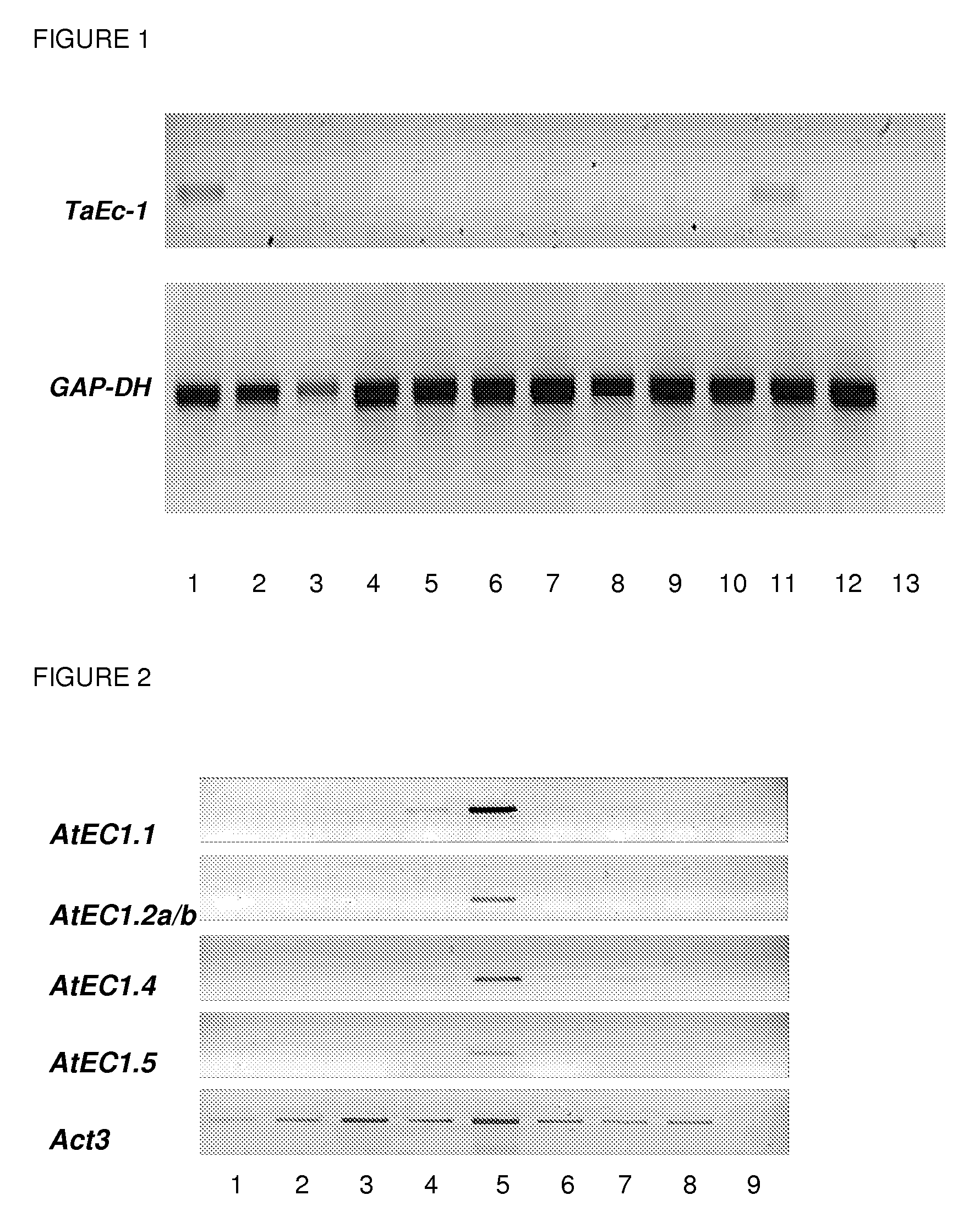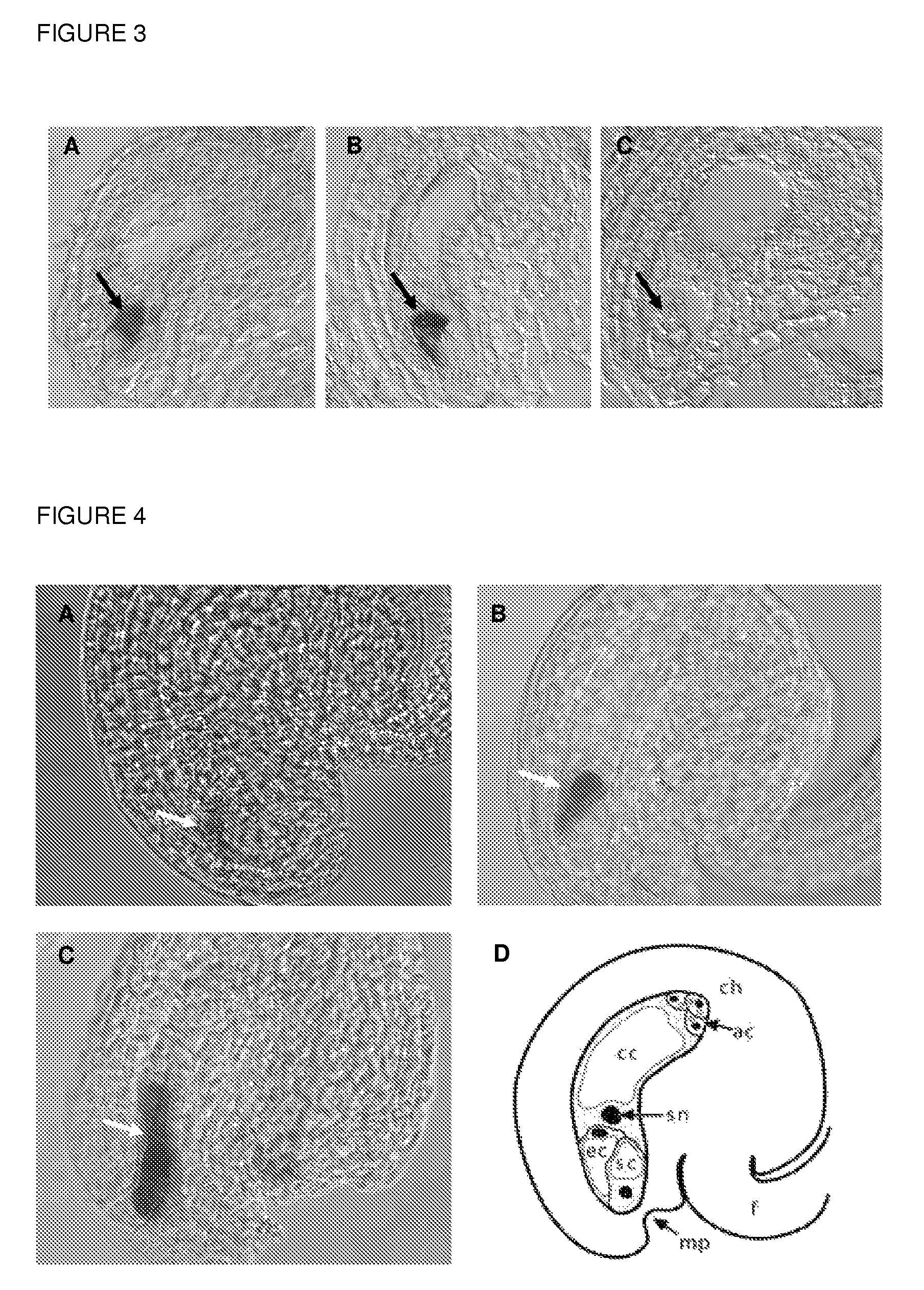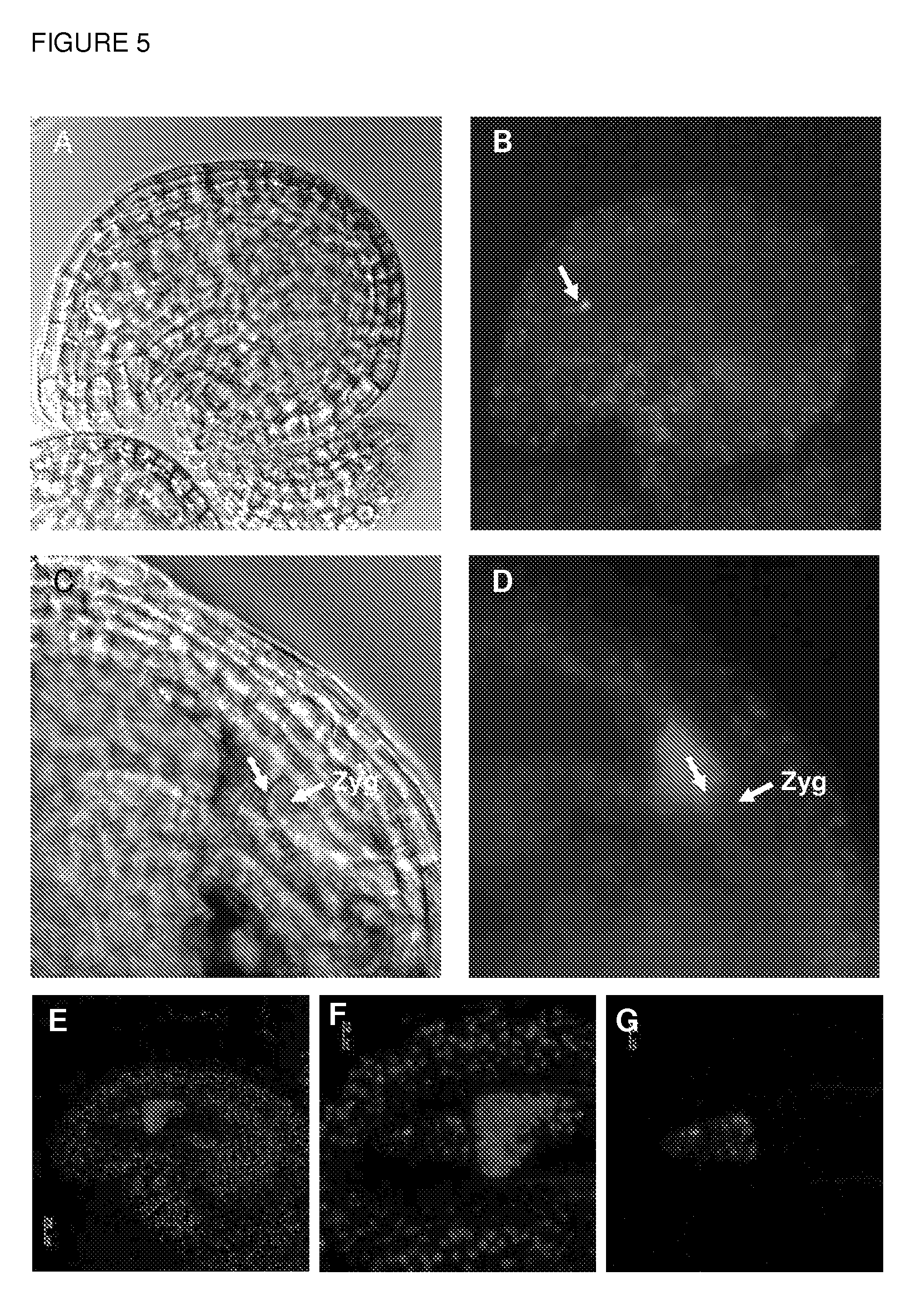Plant egg cell transcriptional control sequences
a technology of transcription control sequences and plant egg cells, applied in biochemistry apparatus and processes, organic chemistry, sugar derivatives, etc., can solve the problem that the transcriptional control sequences of plant egg cells are poorly represented in the current expression sequence tag database (est)
- Summary
- Abstract
- Description
- Claims
- Application Information
AI Technical Summary
Benefits of technology
Problems solved by technology
Method used
Image
Examples
example 1
Identification of Genes Specifically Expressed in Plant Egg Cells
[0161]To order to identify genes that are specifically expressed in the egg cell, female gametophytes of wheat were initially microdissected to isolate egg cells. Using the messenger RNA from 12 egg cells, a cDNA library was constructed and single-run partial sequencing of 960 randomly selected cDNA clones was performed. After DNA sequencer trace data passed an automated cleanup pipeline, a total of 735 ESTs were used for bioinformatical analysis. The 735 ESTs formed 404 independent clusters including 310 singletons.
[0162]The consensus sequences of the clusters were used for BLASTN and BLASTX searches at the NCBI nonredundant database (nr), dbEST and SwissProt database. Some cDNA sequences resulted in limited sequence information from non-coding regions. Therefore, searches were performed against the TIGR Wheat Gene Index Release 8.0, using the BLASTN algorithm. If a match with >95% sequence identity over the total len...
example 2
Confirmation of Egg-Cell Specific Expression for AtEC1-Like Transcripts
[0167]Egg cell-specificity of AtEC1-like transcripts was confirmed by in situ hybridization using embedded sections of mature Arabidopsis pistils hybridized with an AtEC1.2a and AtEC1.1 antisense probe, respectively. As shown in FIG. 3, no mRNA of AtEC1-like genes could be detected in other cells of the unfertilized embryo sac or in young embryos after fertilization.
example 3
Specificity of EC1-Derived Promoters
[0168]Promoter specificity of AtEC1-like genes was analyzed by cloning a defined 5′ upstream region of AtEC1.1 (pAtEC1.1: SEQ ID NO: 24) and a defined 5′ upstream region of AtEC1.2 (pAtEC1.2: SEQ ID NO: 25) upstream of the β-Glucuronidase (GUS) gene. Cloned constructs were used for stable transformation of Arabidopsis. GUS activity was detected in egg cells of unfertilized ovules. After fertilization, however, GUS activity was still visible in the zygote, due to the high stability of β-Glucuronidase (see FIG. 4).
[0169]In addition, EGFP (enhanced green fluorescence protein) was C-terminal fused to the open reading frame of AtEC1.1 (SEQ ID NO: 13), under control of the AtEC1.1 promoter (SEQ ID NO: 24). The construct was used for transformation of Arabidopsis. Ovules of transgenic plants were analyzed microscopically for green fluorescence under DIC and UV-light. In addition, EGFP signals were observed by Confocal Laser Scanning Microscopy (CLSM). A ...
PUM
| Property | Measurement | Unit |
|---|---|---|
| temperature | aaaaa | aaaaa |
| pH | aaaaa | aaaaa |
| Tm | aaaaa | aaaaa |
Abstract
Description
Claims
Application Information
 Login to View More
Login to View More - R&D
- Intellectual Property
- Life Sciences
- Materials
- Tech Scout
- Unparalleled Data Quality
- Higher Quality Content
- 60% Fewer Hallucinations
Browse by: Latest US Patents, China's latest patents, Technical Efficacy Thesaurus, Application Domain, Technology Topic, Popular Technical Reports.
© 2025 PatSnap. All rights reserved.Legal|Privacy policy|Modern Slavery Act Transparency Statement|Sitemap|About US| Contact US: help@patsnap.com



